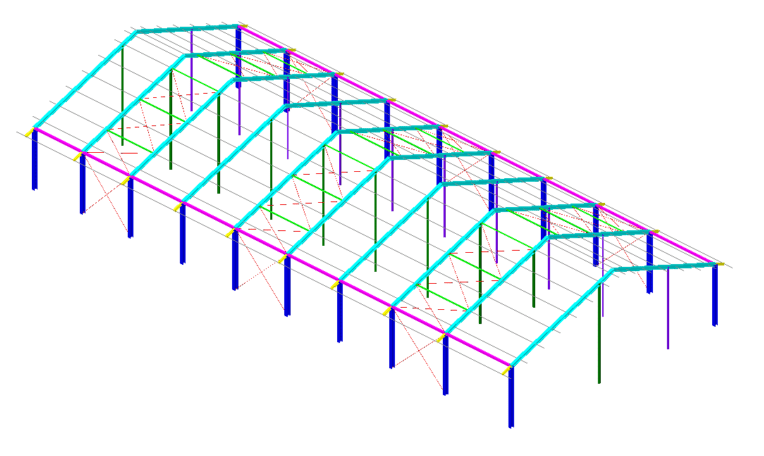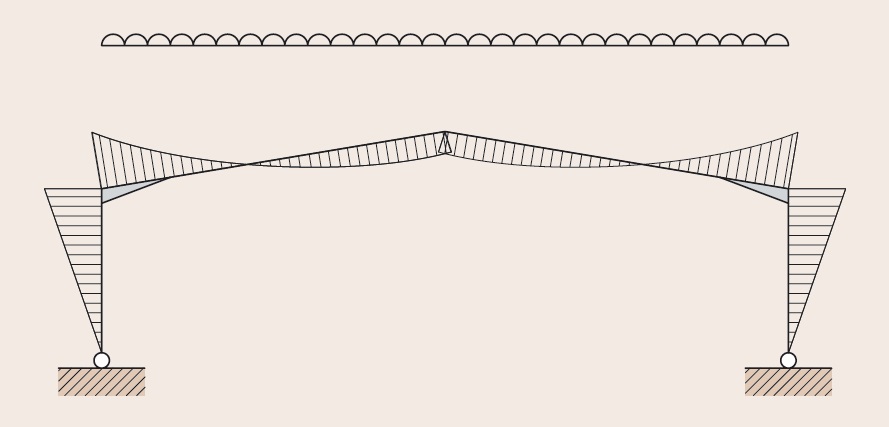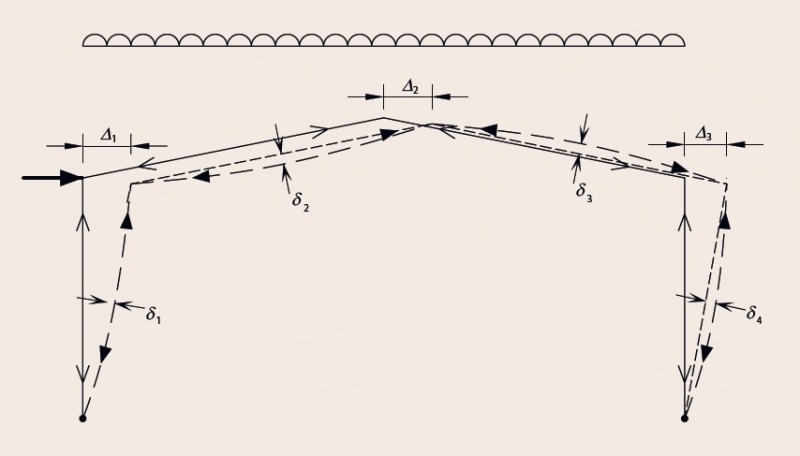Im designing a steel barn.
I cannot change the position of inner columns (hollow circular section).
Outer columns are H profiles . All columns are pinned at bases.
Inner columns have pinned connections to the bottom flange of a steel rafter/beam.
That means that inner columns do not contribute to the stability of a frame.
Stabilty of a single transverse frame is based on moment connections between the the top of outer columns and rafters (eaves haunches) and moment connection at the rafters peak (apex haunch). Since I have a large rafter span on the left side of a frame, the frame is tilting towards right side – especially when snow load is applied. Because of this the top of inner circular column has a displacement at the top which are not that small. Im wondering how should I consider this when designing / controling a steeel column section? Inner columns are pretty high. There are only compression axial forces in inner columns – no bending and no shear forces.
What do you think? Thank you for help.


I cannot change the position of inner columns (hollow circular section).
Outer columns are H profiles . All columns are pinned at bases.
Inner columns have pinned connections to the bottom flange of a steel rafter/beam.
That means that inner columns do not contribute to the stability of a frame.
Stabilty of a single transverse frame is based on moment connections between the the top of outer columns and rafters (eaves haunches) and moment connection at the rafters peak (apex haunch). Since I have a large rafter span on the left side of a frame, the frame is tilting towards right side – especially when snow load is applied. Because of this the top of inner circular column has a displacement at the top which are not that small. Im wondering how should I consider this when designing / controling a steeel column section? Inner columns are pretty high. There are only compression axial forces in inner columns – no bending and no shear forces.
What do you think? Thank you for help.




